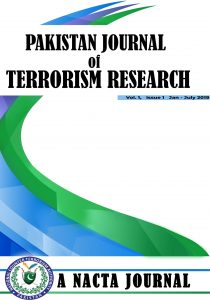Radicalization of Educated Youth in Pakistan: Traits, Narratives and Trends
Keywords:
Youth Radicalization, Pakistan, Caliphate, Ghazwa-e-Hind, Khorasan, EducationAbstract
Around 64 percent of Pakistan’s population is below the age of 30 years, which is expected to rise to 230 million by 2030 and 280 million by 2050. This makes youth the most important demographic group in Pakistan. In recent years, growing radicalization among the country’s educated youth has raised new counter terrorism and extremism challenges. Educated youth’s quest for significance, self-worth and the desire to serve a higher purpose in life have pushed a radical fringe towards militancy. Religious political parties, missionary organizations and modern Islamist networks have, intentionally or unintentionally, facilitated movement of vulnerable youth from non-violent to violent-extremism. Social media has also lowered entry barrier of youth’s participation into militancy. This paper has defined and conceptualized radicalization of educated youth in Pakistan’s context and identified main traits that account for it. The second section details major narratives, such as Ghazwa-e-Hind, Caliphate and the Black Flags of Khorasan which militant organizations have exploited to radicalize the educated youth. The final section offers some policy recommendations to overcome radicalization among the educated youth.

